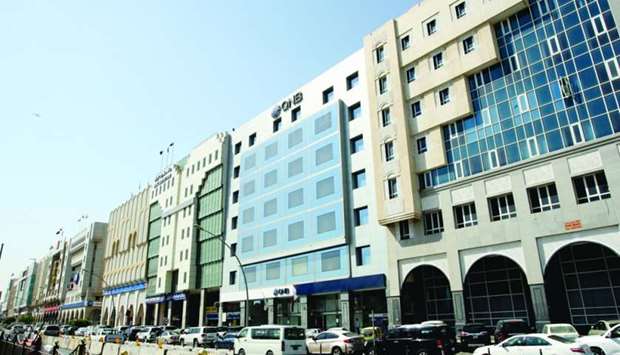SMEs impact on Qatar’s banking system asset quality is low as they account for a small portion of its loan book, and are supported by Qatar Development Bank (QDB) guarantees, Moody’s Investor Service has said in a report.
On the other hand, small and midsized enterprises have had a greater impact on asset quality of banking system elsewhere in the Gulf Cooperation Council (GCC) region, Moody’s noted.
“All the rated banks reported an increase in provisioning cost, with the exception of one bank, where provisioning costs were high in 2019 and reported a lower expense in the first half of 2020 compared to same period last year,” Moody’s said.
“We expect only a limited further deterioration in asset quality in second half of the year (H2, 2020) as the banks' lending books are heavily skewed towards government or related entities, accounting for 29% of total loans as of June 2020, and these loans will be more resilient.
“Retail exposure is mainly to Qatari nationals where job losses have been negligible, and the real estate market is in a cooling-off period for the past few years and new lending to the sector has therefore been relatively limited. Together these factors will limit the increase in provisioning costs, supporting Qatari banks' profitability,” Moody’s said.
However, only a “manageable” increase in provisioning by Qatari banks was expected for 2020, Moody’s said.
Driven by the coronavirus outbreak, loan-loss provisioning costs increased in the first half of the year (H1, 2020), consuming 26% of pre-provision income, up from 17% in H1, 2019.
“We expect provisions to rise further, reflecting problem loan formation as weaker economic activity makes it harder for borrowers to meet their repayments, particularly in the real estate, construction and contracting sectors. However, the banks’ large exposure to the strongly rated Qatar (Aa3 stable) sovereign will shield overall loan performance to a large extent,” Moody’s said.
The Qatari banks preserved their capital buffers in H1 2020, supported by lower dividend payout ratios and strong earnings, thus providing good loss absorbency.
The banks’ aggregate tangible common equity to risk-weighted assets (TCE ratio) stood at 14.7% as of June 2020 compared with 14.6% as of June 2019.
Qatari banks improved their operating efficiency in H1, 2020, which eased the pressure on bottom line profit. Operating expenses fell 3% to QR5.5bn and the cost-to-income ratio dipped to 26% in H1, 2020 from QR5.7bn and 28% respectively in H1, 2019, Moody’s said.
“All the rated banks reported an increase in provisioning cost, with the exception of one bank, where provisioning costs were high in 2019 and reported a lower expense in the first half of 2020 compared to same period last year,” Moody’s said.
“We expect only a limited further deterioration in asset quality in second half of the year (H2, 2020) as the banks' lending books are heavily skewed towards government or related entities, accounting for 29% of total loans as of June 2020, and these loans will be more resilient.
“Retail exposure is mainly to Qatari nationals where job losses have been negligible, and the real estate market is in a cooling-off period for the past few years and new lending to the sector has therefore been relatively limited. Together these factors will limit the increase in provisioning costs, supporting Qatari banks' profitability,” Moody’s said.
However, only a “manageable” increase in provisioning by Qatari banks was expected for 2020, Moody’s said.
Driven by the coronavirus outbreak, loan-loss provisioning costs increased in the first half of the year (H1, 2020), consuming 26% of pre-provision income, up from 17% in H1, 2019.
“We expect provisions to rise further, reflecting problem loan formation as weaker economic activity makes it harder for borrowers to meet their repayments, particularly in the real estate, construction and contracting sectors. However, the banks’ large exposure to the strongly rated Qatar (Aa3 stable) sovereign will shield overall loan performance to a large extent,” Moody’s said.
The Qatari banks preserved their capital buffers in H1 2020, supported by lower dividend payout ratios and strong earnings, thus providing good loss absorbency.
The banks’ aggregate tangible common equity to risk-weighted assets (TCE ratio) stood at 14.7% as of June 2020 compared with 14.6% as of June 2019.
Qatari banks improved their operating efficiency in H1, 2020, which eased the pressure on bottom line profit. Operating expenses fell 3% to QR5.5bn and the cost-to-income ratio dipped to 26% in H1, 2020 from QR5.7bn and 28% respectively in H1, 2019, Moody’s said.




